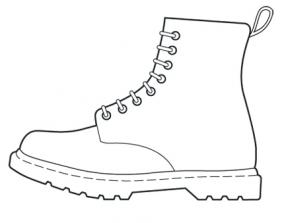It’s interesting how the indie design community respond so well to competitions: Clearly, we need briefs to flourish, we need constraints. The response to last month's Ponoko competition is a case in point. So it’s no surprise that brands keep hurling them at us.
Doc Marten’s is one of the latest with their Freedm campaign, a website that allows you to decorate your own Doc Marten’s boot with the chance of having your design made up for sale (via Core77). This is one of many similarly enticing yet constrictive competitions in which getting your entry manufactured is still ultimately down to chance. At least customisation frameworks such as those offered by Nike, Etnies, and Timbuk2 guarantee some return on your investment of design time and effort, and some offer more freedom.

The cynical side of me sees these competitions as, at worst, simply an attempt by brands to get a lot of ideas for virtually no effort or cost. At best, they might be a means of gaining publicity by jumping on the DIY/open design bandwagon. But maybe they’re genuinely part of the movement and a necessary framework for indie designers to work within. However, if this is the case, it would still be nice to have more opportunity to recover some expenses than relying on the chance that one is going to win. How can we stop ourselves being exploited like this?
I suspect the answer is that these competitions and services are really aimed at facilitating design by the 'non-designers' discussed by Dave here. For more experienced designers, brand-led competitions such as the Muji design award, attract a great deal of interest, presumably because the briefs are so much wider open. Still, surely our time would be better spent directed towards projects that have more grassroots social impact, or that we at least have the means of building or marketing ourselves, such as those found on Thinkcycle? Sadly, this repository (and others) of collaborative, appropriate design, that offers the same reward of having one’s designs become reality, has been significantly less subscribed to.
It seems we relish constraints, while demanding a certain minimum of freedom, and the balance between these determines to what extent we are designers or 'non-designers'. However, whichever we are, it seems that we are ultimately mostly interested in prestige.



No comments:
Post a Comment